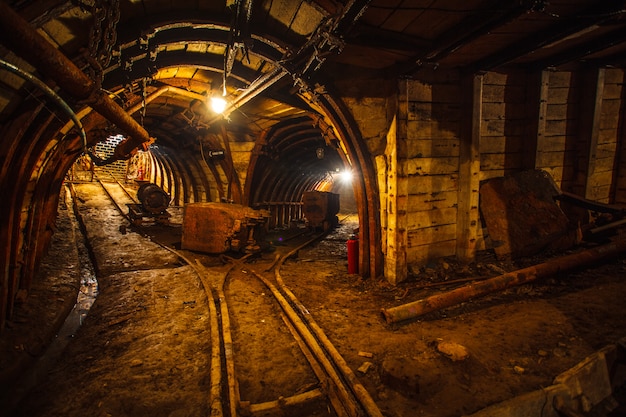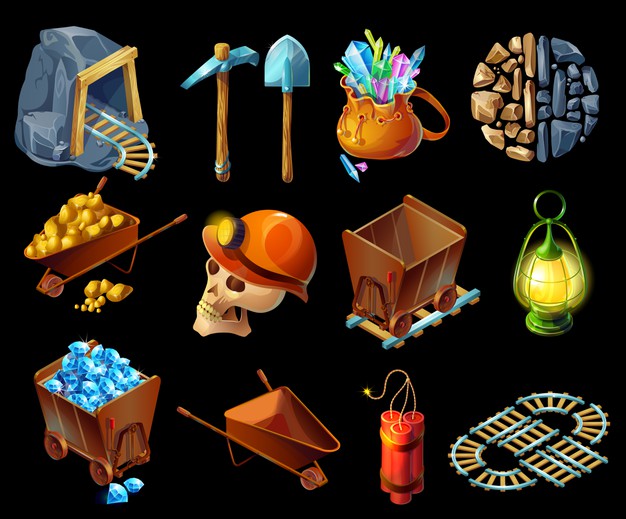Mineral Mining Industry – All You Need To Know

The mineral mining industry is responsible for locating and extracting metal and mineral reserves all over the world. Metals and minerals are mined for profit around the world and then used in jewelry, industrial applications, and investments. The industry has a big number of worldwide enterprises and generates significant income.
What is Mineral Mining?
The extraction of minerals such as coal and valuable gemstones is known as mineral mining. Coal is a major mining commodity that is produced in large quantities all over the world. This material accounts for around 38% of world energy and is significantly used in the creation of electricity. Some countries have reduced coal output due to environmental concerns, but many developing countries rely largely on increasing coal production to maintain economic growth.
Diamonds are a prominent mineral in the jewelry sector, but they are also used in industry. Because diamond is the toughest substance known to man, it is used to make abrasives, saws, and cutting tools. Industrial diamonds are frequently created artificially. This lowers expenses by eliminating the need for diamond mining. Diamond demand is robust thanks to the appeal of diamond jewelry, which drives more diamond mining and the quest for new deposits.
Different Types of Minerals for Mining
There are two types of metals: precious minerals and industrial minerals. Gold, platinum, and silver are examples of precious minerals. Precious minerals are regarded uncommon and can have a high monetary worth. Gold, for example, is regarded as a safe-haven investment in times of economic instability, and its value is derived from what it is used for. In industrial and manufacturing processes, precious minerals are used. Electronics, for example, use palladium.
Copper, aluminum, steel, and zinc are examples of industrial and base minerals used in construction, industry, and technology. In China, Singapore, and India, copper and steel are employed extensively in manufacturing. Copper’s price is frequently monitored by investors since it can be used as a gauge of economic progress. If copper prices rise in tandem with demand, it could signal increased industrial activity, which could contribute to increased global economic growth.
The Mineral Mining Industry
The mining industry as whole experiences booms and busts that are directly linked to global economic situations. As a result, the mining industry is reliant on other industries to continue to identify new uses for metals and minerals, as well as to sustain the need for mining. When the economy isn’t conducive to investment or jewelry manufacture, new uses for minerals help to keep the mining industry afloat.
Mineral investments have grown in popularity as a result of the range of ways investors can buy and hold them, including mutual funds and precious metals shares. While the mining business is supported by the diverse uses of precious metals, it faces new constraints that make establishing and increasing mining activity more challenging. Government regulation, environmental concerns, and other factors raise the cost of mining and make new operations more difficult.
Types of Mineral Mining
Surface and underground mining are two types of mining. The type of mining required and the equipment utilized are determined by the environment and the type of material mined. Let’s learn about it more:
Surface Mining
Surface mining, which employs a variety of processes, is the most frequent method for extracting non-fuel minerals, accounting for 97 percent of total production. Miner uses surface extraction for minerals that are close to the surface. On the surface, there are three major ways to mine. Quarrying, open-pit mining, and strip mining are examples of these methods.
Underground Mining
Removing minerals, ore, metals, or other items from deep underground necessitates a variety of processes. Mining is for either hard or soft rock, and each requires different instruments to extract the resources. For example, instruments designed for digging soft materials may not be powerful enough to cut through hard rock.
The following are examples of underground mining types:
- Pillar and room mining
- Blast mining
- Retreat mining
3 Steps in Mineral Mining
There are three main steps in both surface and underground mining:
Extraction: It is the process of removing resources from a mine site by drilling, blasting, or excavating.
Material handling: It entails sorting and loading commodities for transport to either a disposal location or a processing facility.
Material processing: In order to turn mined ore or other items into finished products, the final stage involves grinding, separating, crushing, refining, and smelting them at an off-site plant.
10 Types of Heavy Equipment Used in Mineral Mining and their Application
1. Hydraulic Mining Shovels
Applications for hydraulic mining shovels are the following:
- Moving dirt or mined products.
- Digging.
- The material gets scoop into a loader.
- To open a surface mine, rock or dirt, sometimes known as overburden, needs to remove.
- Some mined minerals are being transported.
2. Large Mining Trucks
Application of large mining trucks:
- Moving materials at surface mines.
- Materials get haul upon the steep slopes.
- Carrying a payload of up to 400 tons.
3. Large Dozers
Large Dozers have uses for a variety of tasks, including:
- Creating mine sites by removing the top layer of soil to reveal the ground beneath.
- Pushing dirt away from operating areas to keep a mine site clean.
- Land reclamation around mining sites.
- Plant stuff is being ripped out of the ground.
- Raking the land in the vicinity of a mine.
4. Motor Graders
Common applications for graders include:
- Pushing surface material to clean roadways.
- Creating suitable gradients to direct water away from highways.
- Constructing transport roads is a job that requires a lot of effort.
5. Electric Rope Shovels
Electric rope shovels used for the following applications:
- Overburden removal to prepare a mine site.
- Digging through a variety of difficult materials.
- The earth is in motion.
- Boulders move from one place to other.
- Mined material gets transfers to a loader.
- Material transportation.
6. Draglines
Dragline excavators have functions, including:
- Removing exposed material from a strip mine, such as tar sand.
- When compared to other overburden removal technologies, emissions reduce.
- Cutting and removing material from high wall surfaces.
7. Rotary Drill Rigs and Rock Drills
The following are some of the applications for rotary and rock drills:
- Creating holes for surface mining blasting charges.
- To make wells, production drilling comes into use.
- Drilling of pre-split rock.
- Mines expand each day.
8. Large Wheel Loaders
Large wheel loaders are commonly present at surface mines and can perform a variety of activities, including:
- Loading materials onto trucks for delivery.
- Digging.
- On-site support for various loading and transport trucks.
9. Underground Mining Loaders and Trucks
The following are some of the applications for underground mining trucks and loaders machines:
- Digging.
- Loading mined or crushed stones into trucks.
- Material transports to the surface.
10. Wheel Tractor Scrapers
Wheel tractors scrapers have uses for a variety of purposes, including:
- Road construction.
- Making the first cuts into the land in preparation for a mine.
- Land reclamation.
- Carrying out mining operations
Conclusion
The metals and mining industry is responsible for locating and extracting metal and mineral reserves all over the world. Metals and minerals are mining continously for profit around the world and then exports in jewelry, industrial applications, and investments. Precious metals such as gold, platinum, and silver, as well as industrial metals such as steel, copper, and aluminum, are examples of metals. Mineral mining includes the extraction of minerals like coal as well as diamonds. Our company provides the best service for anything that you required.
About Energi Adidaya Nusantara
This guide to mining equipment is to help you better understand the many types of equipment and their process of use. We want to be your one-stop-shop for everything mining machines, parts, and more at Energi Adidaya Nusantara (EAN). We can assist you to discover new equipment, rentals, servicing, power solutions, fluid analysis, and parts, among other things.
Contact Energi Adidaya Nusantara (EAN) by filling out a form in our website or calling +62217995734 if you require additional information or a quote. Visit us at, PT. ENERGI ADIDAYA NUSANTARA, WISMA KDS, 2nd Floor, Unit #202, Jl. Warung Jati Barat No 6B Jakarta Selatan 12740, Indonesia.




Leave a Reply